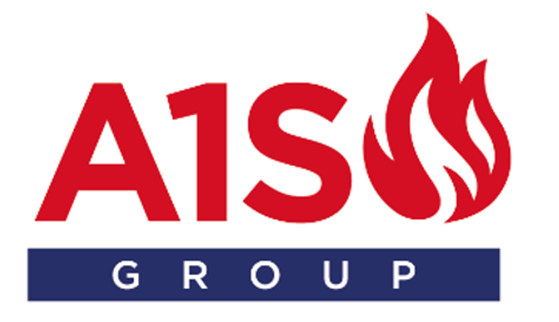The Difference Between Fire Curtains accredited to EN BS1634 and BS8524
Of course with the pricing differential between an EN BS 1634 curtain and a BS 8524 we are regularly asked what is the difference between the two relevant UK Fire Curtain standards in the UK. A recent client email via Arup pointed out the primary issue succinctly. “BS 8524 is the UK standard for an ACTIVE fire curtain.” And the active functionality and testing of a fire curtain is a good place to start if you wish to understand the differences between the two standards.
Previous to the publication of BS 8524, the only test requirements for Fire Curtains were their fire resistance and smoke control characteristics, i.e. integrity and radiation, Sa smoke classification and the now defunct insulation zone. As a company our fundamental argument was always that you can achieve the performance requirements as stipulated by Pas 121, BS 476 and EN BS 1634-1 with furnace testing, but that simply is not enough, because it is critically important to cyclic test fire curtains and smoke curtains to at least C1 Class i.e. a minimum of 500 cycles.
We are aware of test data from UK fire curtain manufacturers with non existent cyclic testing or where fabric fire curtains have been subjected to 25 manually operated and opening and closing cycles. A simple examination of the fabric, guides and poppers will often expose that the material within its build structure simply isn’t malleable enough to continually roll up and down. Yes it achieved a fire resistance rating during furnace testing, but how do you know you aren’t buying a cheap saucepan? Use it once and next time you burn your omelette. Our point is that if you have not replicated the life cycle of a fire curtain, how will you ever know that it will perform after commissioning, regular alarm inspections and mandatory servicing. You won’t. Which is why we are inundated with requests to replace non cyclic tested competitor curtains. The old adage, buy cheap buy twice comes to mind. But the proven robustness and long term performance of the product is not the only issue here. There is also an absolute requirement for this critical life safety equipment to properly function in an emergency. So difference one, a curtain to BS 8524 assures cyclic testing and thus reliability throughout the ten year plus life cycle of a fire curtain and life critical functionality in deployment situations.
Secondly BS 8524 fire curtains must pass an impact test to BS 5234-2, SD classification. BS 5234: Part 2 comprises a series of tests which examine a partition systems' suitability for a given partition duty. In the case of a fire curtain a fifty kilogram weight is swung into a central point of the curtain both before and after the cyclic test. The curtain must not leave its guides. This is purely to replicate the possibility of an individual falling or leaning into the curtain.
The third significant difference, and the part of BS 8524 that proved most difficult for manufacturers to achieve is the motor test (Annex G) to 400 degrees for thirty minutes. The issue for a fire curtain has always been once the fire breaks out, the immediate ceiling vicinity of the motor and head box will have the highest temperature. So why not replicate 400 degree conditions for 30 minutes? This is exactly what BS 8524 dictates. Only once the motor has been tested in a furnace to a minimum of 400 degrees for a minimum period of 30 minutes with a minimum of 12 cycles is it deemed to pass. And this is particularly critical for emergency services who will require the motor to still function once the access switch is activated or when the control panel is set for time delayed descent.
With the increasing use and requirement for ancillary equipment to give fire curtains additional functionality it makes sense to fully test each individual ancillary item in conjunction with the fire curtain and that is what Annex H now demands. Life safety fire curtains quite simply should not acquire additional functionality through untested bolt-ons. So whether it be egress or access switches, single or multi beam obstruction warnings, or smoke and heat detectors, a client can rest assured that the ancillary items have to be fully tested with a BS 8524 fire curtain.
Deployment speed must now test between (Vertical Curtain): ≥0.06 m/s at any height; ≤0.15 m/s below 2 m (Horizontal Curtain) : ≥0.06 m/s at any height; ≤0.3 m/s below 2 m. Too slow and the requisite integrity will not be achieved in a timely manner, too fast and the fire curtain is a danger to those under it.
The above changes and test requirements are given in the performance requirement table 5 of BS 8524-1. The table also includes further mandatory testing including reaction to fire. Fabric used in the construction of a barrier assembly shall be tested in accordance with BS 476-6 and BS 476-7 to achieve a Class 0 or Class 1 rating, or BS EN ISO 1716 or BS EN ISO 1182 and BS EN 13823 to achieve a minimum of B-s3,d2 (Class 0 equivalent) or a minimum of C-s3,d2 (Class 1 equivalent). Deflection data is also to be assessed.
All of the above testing is covered in one comprehensive UKAS accredited third party certification scheme from IFC to BS 8524-1. Our certificate number is IFCC 1542. This scheme assesses the entire testing regime and all relevant performance criteria. Increasingly UK building controls now publish documentation stipulating BS 8524 and third party accreditation from IFC as a requirement for fire curtains and we are aware of curtains being condemned as non-compliant without such documentation.
For further information on A1S Group range of BS 8524-1 Fire Curtains and BS 8524-2 Installation, please contact enquiries@a1shutters.co.uk or call 01204 383839

